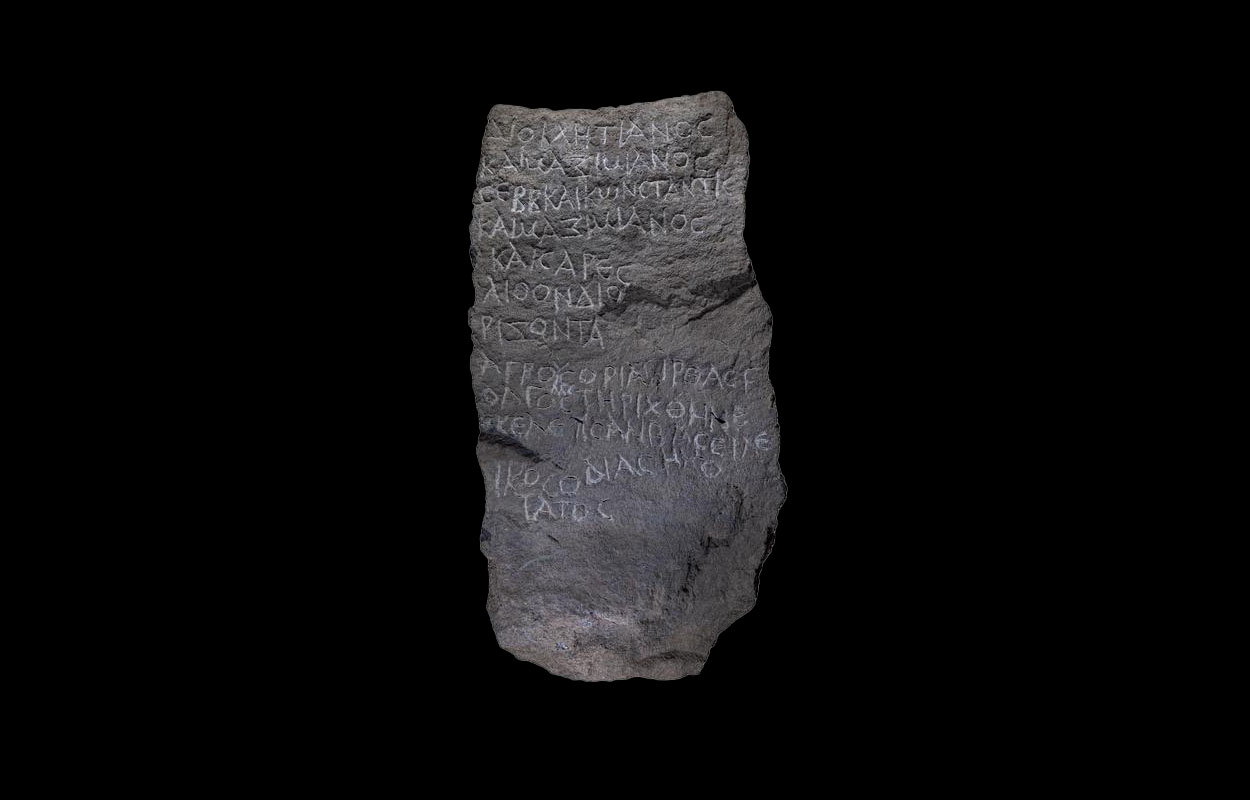Archaeologists excavating the biblical site of Abel Beth Maacah in northern Israel have uncovered a rare Tetrarchic boundary stone, offering valuable insights into ancient land management under Roman rule.
The stone, inscribed in Ancient Greek, was discovered repurposed as a cover for a Mamluk-period grave. It references two previously undocumented village names, Tirthas and Golgol, both of which correspond with two sites recorded in a survey of Western Palestine in the 19th century.
Tetrarchic boundary stones were used to delineate agrarian borders between villages during the reign of the Roman Tetrarchy. They were introduced by Diocletian in AD 293 to standardise taxation and clarifying land ownership.
“This discovery is a testament to the meticulous administrative re-organisation of the Roman Empire during the Tetrarchy,” said Prof. Uzi Leibner. “Finding a boundary stone like this not only sheds light on ancient land ownership and taxation but also provides a tangible connection to the lives of individuals who navigated these complex systems nearly two millennia ago.”
Made from basalt, the stone measures 101 centimetres in height and is relatively intact. According to a study published in the journal Palestine Exploration Quarterly, the stone also introduces an imperial surveyor, or censitor, whose name appears for the first time in the historical record.
Dr. Avner Ecker added, “What makes this find particularly exciting is the mention of two previously unknown place names and a new imperial surveyor. It underscores how even seemingly small discoveries can dramatically enhance our understanding of the socio-economic and geographic history of the region.”
The discovery adds to a growing collection of more than 20 boundary stones concentrated in the northern Hula Valley, pointing to a period of increased administrative oversight.
Header Image Credit : Tal Rogovsky
Sources : The Hebrew University of Jerusalem – https://doi.org/10.1080/00310328.2024.2435218





